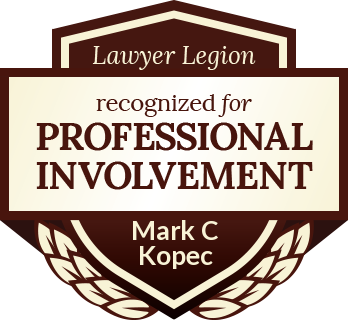Mark Kopec Now
Blood Thinners
Navigating the High Stakes of Blood Thinner Therapy: A Medical Malpractice Perspective
Blood thinners are also called as anticoagulants and antiplatelet drugs. They are a staple of modern medicine, protecting against potentially deadly blood clots in millions of patients. However, their powerful effects also carry significant risks, making their management a delicate balancing act. When medical negligence disrupts this balance, the consequences can be severe. This can lead to serious injury or even death, and for the basis for medical malpractice claims. This article delves into the history of these vital medications. It identifies patients who need them and outlines the conditions and symptoms showing their necessity. This article also explores the dangers of not giving them and examines the landscape of medical malpractice in anticoagulant therapy. If you are injured, you may need Baltimore Blood Thinners Lawyer Mark Kopec at the Kopec Law Firm.

A Century of Clot Prevention: The History of Blood Thinners
The journey of blood thinners from serendipitous discoveries to sophisticated pharmacology is a fascinating chapter in medical history. The story begins in the early 20th century.
- Heparin’s Serendipitous Discovery: In 1916, Jay McLean was a medical student in the second year at Johns Hopkins University. He found heparin while searching for a pro-coagulant (a substance that promotes clotting). Instead, he found a potent anticoagulant in canine liver cells. It took several more years for heparin to become pure and made safe for human use. Its first clinical applications occurred in the 1930s. Unfractionated heparin (UFH), administered intravenously or subcutaneously, became standard to treat and prevent blood clots.
- Warfarin and the Spoiled Sweet Clover: Around the same time, a mysterious hemorrhagic disease in cattle in the northern United States and Canada was puzzling veterinarians. In the 1920s, Dr. Frank Schofield was a Canadian veterinary pathologist. He linked the condition to sweet clover hay that wasn’t cured correctly. The anticoagulant compound, dicoumarol, was finally isolated in 1939. Karl Paul Link and his team at the University of Wisconsin did it. This research led to the synthesis of warfarin in the 1940s, initially as a rat poison. Doctors soon recognized its potential as a therapeutic anticoagulant, and warfarin was approved for medical use in humans in 1954. As an oral medication, warfarin (often known by the brand name Coumadin) changed long-term anticoagulation.
More Recent Developments
- Refinements and New Frontiers: The latter half of the 20th century saw significant advancements. Low Molecular Weight Heparins (LMWHs), such as enoxaparin, were developed in the 1980s. These offered more predictable anticoagulant effects and a longer half-life than UFH, allowed for subcutaneous administration, often at home.
- The Era of Direct Oral Anticoagulants (DOACs): The 21st century ushered in a new class of anticoagulants: DOACs, also known as Non-Vitamin K Antagonist Oral Anticoagulants (NOACs). These drugs, including dabigatran (a direct thrombin inhibitor) and rivaroxaban, apixaban, and edoxaban (Factor Xa inhibitors), offer several advantages over warfarin, such as fixed dosing, fewer food and drug interactions, and no routine requirement for frequent blood monitoring (like the INR test for warfarin). However, their higher cost and the initial lack of specific reversal agents (though some are now available) were early considerations.
Who Needs Blood Thinners? Conditions and Symptoms
A diverse range of patients requires anticoagulant therapy to prevent or treat dangerous blood clots. The decision to initiate blood thinners is based on a careful assessment of the patient’s medical history, current conditions, and risk factors for both clotting and bleeding.
Medical Conditions Requiring Blood Thinners
- Atrial Fibrillation (AFib): This is one of the most common reasons for giving blood thinners. AFib is an irregular and often rapid heartbeat that can cause blood to pool in the heart’s upper chambers (atria), leading to clot formation. If these clots travel to the brain, they can cause a stroke.
- Venous Thromboembolism (VTE): VTE encompasses two serious conditions:
- Deep Vein Thrombosis (DVT): A blood clot that forms in a deep vein, usually in the leg.
- Pulmonary Embolism (PE): A potentially deadly condition that occurs when a DVT breaks free and travels to the lungs, blocking blood flow.
- Mechanical Heart Valves: Patients with mechanical heart valve replacements require lifelong anticoagulation (typically with warfarin). The artificial surface of the valve can promote clot formation. Clots can lead to valve dysfunction or embolic stroke.
- Post-Surgical Prophylaxis: Major surgeries, especially orthopedic procedures like hip or knee replacements, significantly increase the risk of DVT and PE due to immobility and tissue trauma. Doctors often prescribed blood thinners for a period post-operatively to prevent these complications.
- Acute Coronary Syndrome (ACS) and Myocardial Infarction (Heart Attack): Blood thinners are crucial in the acute management of heart attacks and unstable angina to prevent further clot formation in the coronary arteries and to prevent clots from forming in the heart chambers if heart function is impaired.
Additional Conditions
- Stroke or Transient Ischemic Attack (TIA): For strokes caused by blood clots (ischemic strokes), anticoagulants may be used for secondary prevention, especially if there’s an underlying condition like AFib. Antiplatelet drugs like aspirin are also commonly used.
- Peripheral Artery Disease (PAD): In some cases of PAD, particularly after interventions, blood thinners may be used to prevent clot formation in the affected arteries.
- Certain Genetic or Acquired Clotting Disorders (Thrombophilias): Conditions like Factor V Leiden, prothrombin gene mutation, or antiphospholipid syndrome increase the predisposition to blood clots and may require long-term anticoagulation.
- Cancer: Some cancers and their treatments increase the risk of VTE, and the patient may need anticoagulants for prevention or treatment.
Baltimore blood thinners lawyer Mark Kopec can review your medical condition and the need for blood thinners.
Symptoms Indicating a Potential Need for Blood Thinners (often related to an existing clot)
It’s important to note that these symptoms indicate a serious medical event potentially requiring anticoagulation as part of the treatment, rather than symptoms that a patient would self-diagnose as needing blood thinners.
- Symptoms of DVT: Swelling, pain, tenderness, warmth, and redness in the affected limb (usually a leg).
- Symptoms of PE: Sudden shortness of breath, chest pain (often sharp and worse with deep breaths), rapid heartbeat, coughing (sometimes with blood), lightheadedness, or fainting.
- Symptoms of Stroke: Sudden numbness or weakness (especially on one side of the body), confusion, trouble speaking or understanding speech, vision problems, dizziness, loss of balance, or severe headache with no known cause.
- Symptoms of Heart Attack: Chest pain or discomfort (pressure, squeezing, fullness), pain radiating to the arm, jaw, neck, or back, shortness of breath, nausea, sweating, or lightheadedness.
- Symptoms related to Atrial Fibrillation (before diagnosis or if untreated): Palpitations, fatigue, dizziness, shortness of breath, chest pain. While not direct symptoms of a clot, they indicate a condition that significantly increases clot risk.
Who Prescribes Blood Thinners
A variety of medical doctors can prescribe blood thinners, with the specific type of physician often depending on the underlying health condition necessitating their use:
- Cardiologist
- Vascular surgeon
- Hematologist
- Primary care physician
- Orthopedic Surgeon
- Neurologist
- Oncologist
- Hospitalist
The Perils of Untreated Clotting Risks & the Need for Baltimore Blood Thinners Lawyer Mark Kopec
Failing to receive necessary anticoagulant therapy when needed can have dire, life-altering, and often preventable consequences. The specific risks depend on the underlying medical condition:
- Stroke in Atrial Fibrillation: Patients with AFib who the doctor does not adequately provide blood thinners have a significantly increased risk of ischemic stroke. These strokes can be large and debilitating, leading to permanent neurological deficits, disability, or death.
- Recurrent VTE: Without appropriate anticoagulant treatment, patients who have experienced a DVT or PE are at high risk of it recurring. Subsequent PEs can be fatal. Chronic DVT can lead to post-thrombotic syndrome, characterized by chronic leg pain, swelling, and skin changes.
- Complications from Mechanical Heart Valves: Lack of anticoagulation in patients with mechanical heart valves can lead to clot formation on the valve and can impair its function (valve thrombosis) or causing emboli that can lead to stroke or damage other organs.
- Increased Mortality and Morbidity Post-Surgery: Failure to use prophylactic anticoagulation after high-risk surgeries can result in preventable DVTs and PEs, contributing to post-operative complications, longer hospital stays, and increased mortality.
- Progression of Arterial Thrombosis: In conditions like ACS or PAD, inadequate anticoagulation can lead to the extension of existing clots or the formation of new ones, worsening ischemia and potentially leading to limb loss or more extensive heart damage.
When Care Falters: Medical Malpractice Claims with Baltimore Blood Thinners Lawyer Mark Kopec
The prescription and management of blood thinners require a high degree of diligence and care from doctors. Errors can occur at various stages, from initial prescription to ongoing monitoring and patient education. These errors can lead to severe harm and form the basis of medical malpractice lawsuits. Common types of claims include:
- Failure to Prescribe or Delayed Prescription:
- Misdiagnosis: Failing to diagnose a condition that warrants anticoagulation (e.g., AFib, DVT) and therefore not giving the necessary medication.
- Ignoring Risk Factors: Overlooking significant risk factors for VTE (e.g., recent major surgery, prolonged immobility, history of clots) and not initiating prophylactic anticoagulation.
- Delayed Treatment: Unreasonable delays in starting anticoagulants once the doctor makes a diagnosis like PE or acute ischemic stroke.
- Incorrect Dosage or Medication Errors:
- Wrong Dose: Prescribing or administering a dose that is too high (leading to bleeding) or too low (leading to clotting). This is particularly critical with warfarin, where the therapeutic window is narrow.
- Wrong Medication: Administering the wrong type of blood thinner, or confusing look-alike/sound-alike drug names.
- Inappropriate Choice of Anticoagulant: Selecting an anticoagulant that is contraindicated for a specific patient (e.g., certain DOACs in patients with mechanical heart valves or severe renal impairment) without proper reason.
- Failure to Monitor or Improper Monitoring:
- Inadequate INR Monitoring (for Warfarin): Not performing INR tests frequently enough, failing to act on out-of-range INR values, or not adjusting the warfarin dosage appropriately, leading to either bleeding or clotting.
- Ignoring Bleeding Signs: Dismissing patient complaints or clinical signs of bleeding (e.g., excessive bruising, blood in stool/urine, severe headaches) without proper investigation and management.
- Lack of Monitoring for Side Effects or Complications: Failing to monitor for known side effects or potential complications of specific anticoagulants, such as heparin-induced thrombocytopenia (HIT).
Baltimore blood thinners lawyer Mark Kopec will discuss your potential claims with you.
Additional Claims
- Failure to Manage Drug Interactions:
- Prescribing new medications that interact with the patient’s existing blood thinner. This can increase the risk of bleeding (e.g., certain antibiotics, NSAIDs with warfarin) or decrease its effectiveness, without appropriate dose adjustments or increased monitoring.
- Inadequate Patient Education and Communication:
- Failing to adequately inform the patient about the risks and benefits of the blood thinner.
- Not providing clear instructions on dosage, administration, the importance of adherence, dietary restrictions (especially with warfarin and Vitamin K), and signs of bleeding or clotting to watch for.
- Failing to communicate crucial information between healthcare providers, such as during hospital discharge or when transitioning care.
- Negligent Management of Bleeding Events:
- Delay in diagnosing or treating a serious bleed caused by anticoagulants.
- Failure to administer appropriate reversal agents when indicated and available.
- Errors During Perioperative Management:
- Improperly stopping or bridging anticoagulation before or after surgical procedures. This can lead to either excessive bleeding during surgery or thromboembolic events due to inadequate anticoagulation.
Successfully pursuing a medical malpractice claim typically requires demonstrating that a healthcare provider breached the accepted standard of care. The breach also must also directly cause harm to the patient. Qualified medical providers usually must serve as expert witnesses to establish both the breach of duty and causation.
Next Step: Call Baltimore Blood Thinners Lawyer Mark Kopec
Blood thinners are life-saving medications. However, their use is fraught with potential dangers if not managed with utmost care and precision. From their historical roots to the complexities of modern anticoagulant therapy, understanding their role, indications, and risks is crucial for both patients and healthcare providers. When a doctor fails to meet the standard of care, and patients suffer preventable harm due to errors in prescribing, monitoring, or managing blood thinners, the medical and legal ramifications can be profound. A thorough understanding of these issues is vital for ensuring patient safety and for seeking justice when negligence occurs.
If you or a family member has been injured, visit our free consultation page or video. Then contact the Kopec Law Firm at 800-604-0704 to speak directly with Attorney Mark Kopec. He is a top-rated Baltimore medical malpractice lawyer. The Kopec Law Firm is in Baltimore and pursues cases throughout Maryland and Washington, D.C.





